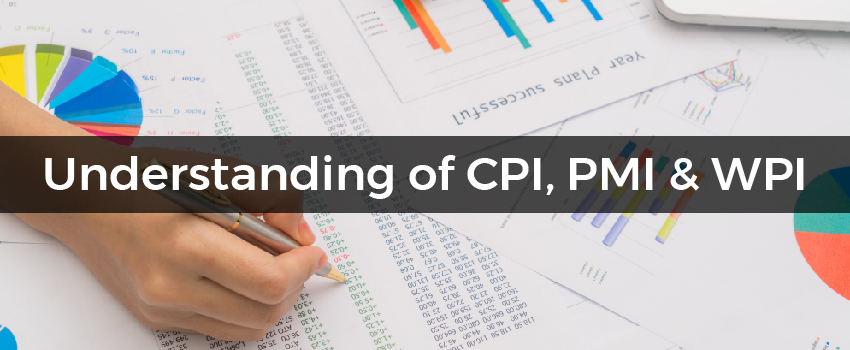Inflation has turned into a conversation starter these days, prices of goods & services are on an upward trajectory. With so many jargons and inflation data, we have explained the most important price index, how these numbers are calculated and what effects they have on your investments.
CPI
A Consumer Price Index (CPI) is designed to measure the changes over time in the general level of retail prices of selected goods and services that households purchase for the purpose of consumption. The Consumer Price Index can be interpreted as a measure of the purchasing power of retail consumers who belong to the country’s demand side.
Nov 2022 CPI came at 176.7 vs. 176.5 for Oct 2022.
How it is calculated?
CPI is computed by taking into account 299 items.
| Description | Weightage Combined % (Rural+Ubran) |
| Food and beverages | 45.9% |
| Clothing and footwear | 6.5% |
| Housing | 10.1% |
| Fuel and light | 6.9% |
| Pan, tobacco, and intoxicants | 2.3% |
| Miscellaneous | 28.3% |
| Total | 100% |
CPI = (Cost of the representative basket in the current year/ Cost of the representative basket in the base year) * 100%
The base year is monitored by the Central Statistics Office (CSO), Ministry of Statistics and Programme Implementation (MOSPI), and changes from time to time. From Jan 2015, the base year has been shifted to 2012.
Effect on different asset classes & Investments?
If the CPI is rising rapidly, it may indicate that the economy is experiencing high levels of inflation. This can be a concern for investors, as it can erode the value of their financial investment, while it can be beneficial of real assets (commodities, real estate, etc.). Inflation can also make it difficult for investors to accurately predict the future value of their investments, as the purchasing power of their money may change.
On the other hand, if the CPI is stable or declining, it may indicate that the economy is experiencing low levels of inflation. This can be favourable for investors, as it can help to preserve the value of their investments and make it easier to predict their future value.
PMI
Purchasing Managers’ Index measures the performance of the manufacturing sector and is derived from a survey of 500 manufacturing companies.
For calculating manufacturing PMI, the questionnaire is sent to manufacturing companies. The questions are factual in nature and the survey is not meant for opinions, intentions, or expectations. The questions are related to 5 key variables. The variables with their weights in the index are — new orders (30%), output (25%), employment (20%), suppliers’ delivery times (15%), and stock of items purchased (10%). The surveys are conducted on a monthly basis.
Composite PMI came at 59.4 in December 2022 from 56.7 in Nov 22.
Effect on different asset classes & Investments?
A PMI above 50 indicates that the manufacturing sector is expanding, while a PMI below 50 indicates that it is contracting. Changes in the PMI can be an important indicator of the overall health of the economy, as the manufacturing sector is typically a significant contributor to economic growth.
The impact of the PMI on the economy and equities can vary. A high PMI may indicate that the manufacturing sector is performing well and that the economy is likely to be growing. This can be positive for equities, as it may lead to increased demand for goods and services, which can in turn drive up the value of stocks. On the other hand, a low PMI may indicate that the manufacturing sector is struggling and that the economy is slowing down. This can be negative for equities, as it may lead to reduced demand and lower profits for companies.
WPI
Wholesale Price Index (WPI) is a measure of the average price of goods traded between wholesalers and retailers in an economy. It is used to track changes in the prices of goods at the wholesale level for Food, Fuel & Power, and Manufactured products which is often used as an indicator of inflation in that segment.
| Nov 22 | Oct 22 | |
| WPI Food | 174.3 | 177.5 |
| WPI Fuel & Power | 159.6 | 155.2 |
| WPI Manufactured products | 141.5 | 141.9 |
Effect on different asset classes & Investments?
If the WPI is rising rapidly, it may indicate that the cost of goods is increasing, which can lead to higher prices for consumers and potentially lower profits for companies. This can be negative for equities, as it may lead to reduced demand for goods and lower stock prices. Fixed-income assets, such as bonds, as rising inflation, can suffer as inflation erodes the purchasing power of the fixed payments that these assets provide.
While stable or declining WPI may indicate that the cost of goods is stable or decreasing, which can be favourable for companies and potentially positive for equities.
Considering Inflation-adjusted returns beneficial in understanding the real value of an investment and if the money has grown in real terms or not. Say your investment gave you 8% returns per annum over a period of time and the value of money, which is inflation, also rose 8%; net-net your investment’s returns get nullified. Hence one needs to consider inflation-adjusted returns to get a true sense of growth in investments.
Already have an account? Log in
Want complete access
to this story?
Register Now For Free!
Also get more expert insights, QVPT ratings of 3500+ stocks, Stocks
Screener and much more on Registering.







 Download APP
Download APP























Comment Your Thoughts: